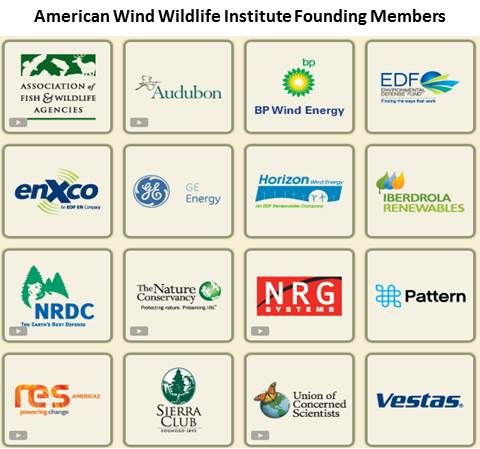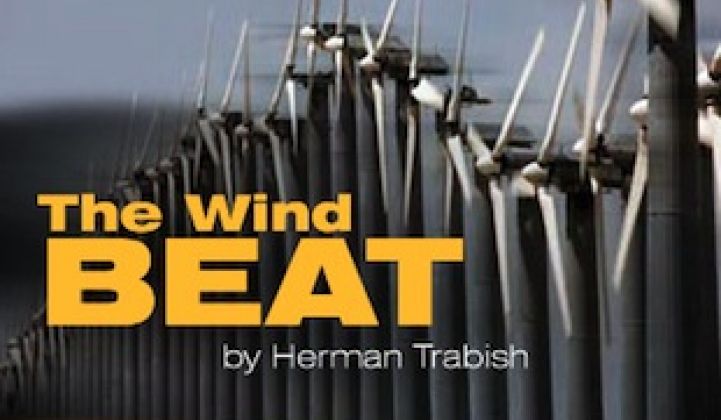The wind industry’s lobbying group named a new CEO whose career bridging the divide between business and environmentalists could mean a breakthrough for wind.
Tom Kiernan, who has served as President of the National Parks Conservation Association (NPCA), New Hampshire Audubon Society President, and as an EPA Clean Air official, was unanimously elected the American Wind Energy Association (AWEA) CEO.
Kiernan replaces Denise Bode, who resigned in January. He steps in after the industry’s record 2012, when threatened by the expiration of the vital production tax credit (PTC), developers rushed to get as much capacity as possible completed. The result was 13 gigawatts of new wind. At 42 percent of the nation’s new generating capacity, it led all other energy sources. The industry also leveraged $25 billion in private sector investment and took back world leadership in wind from China.

Though the PTC was finally extended for one year, the industry anticipates a sharp 2013 drop-off in productivity due to last year’s uncertainty.
As NPCA president, Kiernan almost tripled support, more than tripled the number of field offices, and increased net assets from under $5 million to over $60 million. As a senior EPA official in George H. W. Bush’s administration, Kiernan won the Gold Medal for brokering an agreement between environmentalists and the business community for a $450 million Grand Canyon pollution-control project.
An AWEA insider told GTM that the organization's staff, which reportedly had a bumpy ride with the dynamic Bode, seems pleased with the Kiernan appointment. There are rumors that Bode, a Republican who had worked in the oil and gas industry, was pushed out for failing to smooth the PTC's extension.
However, her role in the process may be underappreciated. When congressional conservatives aligned against the renewal last year, Bode declared “this bleeding has to stop” and led AWEA’s vigorous lobbying effort to convince opponents of wind’s non-partisan status.
But like other stalwart Republicans, Bode could not get traction with Tea Party-affiliated arch-conservatives. In December, when many became lame ducks in the wake of the Obama victory, she offered, as a compromise, AWEA’s six-year PTC phase-out analysis. She also solidified support with moderate Republicans from wind-rich Midwestern states.
The result was the PTC extension and new language allowing it to have an impact well into 2014. But Bode chose her compromise language carefully. Today, AWEA officials point out the offer was made “in the context of larger tax reform and with representatives of the other energy industries at the table.”
The likelihood of comprehensive tax reform being passed is uncertain, and bringing the fossil and nuclear industries to that table is unlikely. So the wind industry has no real PTC phase-out obligation to hold to, thanks in part to Bode.
But a fight over a new PTC extension is only months away, and it remains to be seen if Kiernan, whose appointment was endorsed by prominent Republicans and Democrats alike, can be more effective than Bode.
As to his peacemaking between the business and environmental communities, the reception for imminent releases from the American Wind Wildlife Institute (AWWI) may be telling. Composed of twenty-one wind companies and nine national conservation and science groups including the National Audubon Society, AWWI is about to bring out advanced tools enabling wind developers to identify more environmentally benign project sites.

“We would not have Audubon, National Wildlife Federation, Environmental Defense Fund, Defenders of Wildlife, Natural Resources Defense Council and others as equal members of the Board and equal members in decision making if they didn’t think wind technology had a lot of value,” Executive Director Abby Arnold recently told GTM.
“AWWI is a problem-solving collaboration in a world where everybody wants to argue and look for conflict. We intend to focus like a laser beam on science and what we can do, rather than being polarized,” she said. “Wind is a mitigating factor for climate change,” Arnold added. “All energy sources have impacts. Don’t just look at wind. Ultimately, society has to decide on the costs and benefits of all the energy technologies.”
In a related wind industry item, new studies about the possible health impacts from living near wind turbines verify last year’s Massachusetts Department of Environmental Protection conclusion that "Wind Turbine Syndrome" is likely a psychogenically communicated condition induced by the "nocebo" effect.
Australia and New Zealand researchers independently concluded that complaint clusters of headaches, nausea, exhaustion, tingling, trouble concentrating, gastrointestinal distress, and other such broad symptoms were far more common when the patient populations reporting them had been warned in advance of the potential of negative health impacts.
People living near newly erected cell towers that were similarly pre-cautioned have registered a similar cluster of symptoms, dubbed "Wi-Fi Syndrome."



